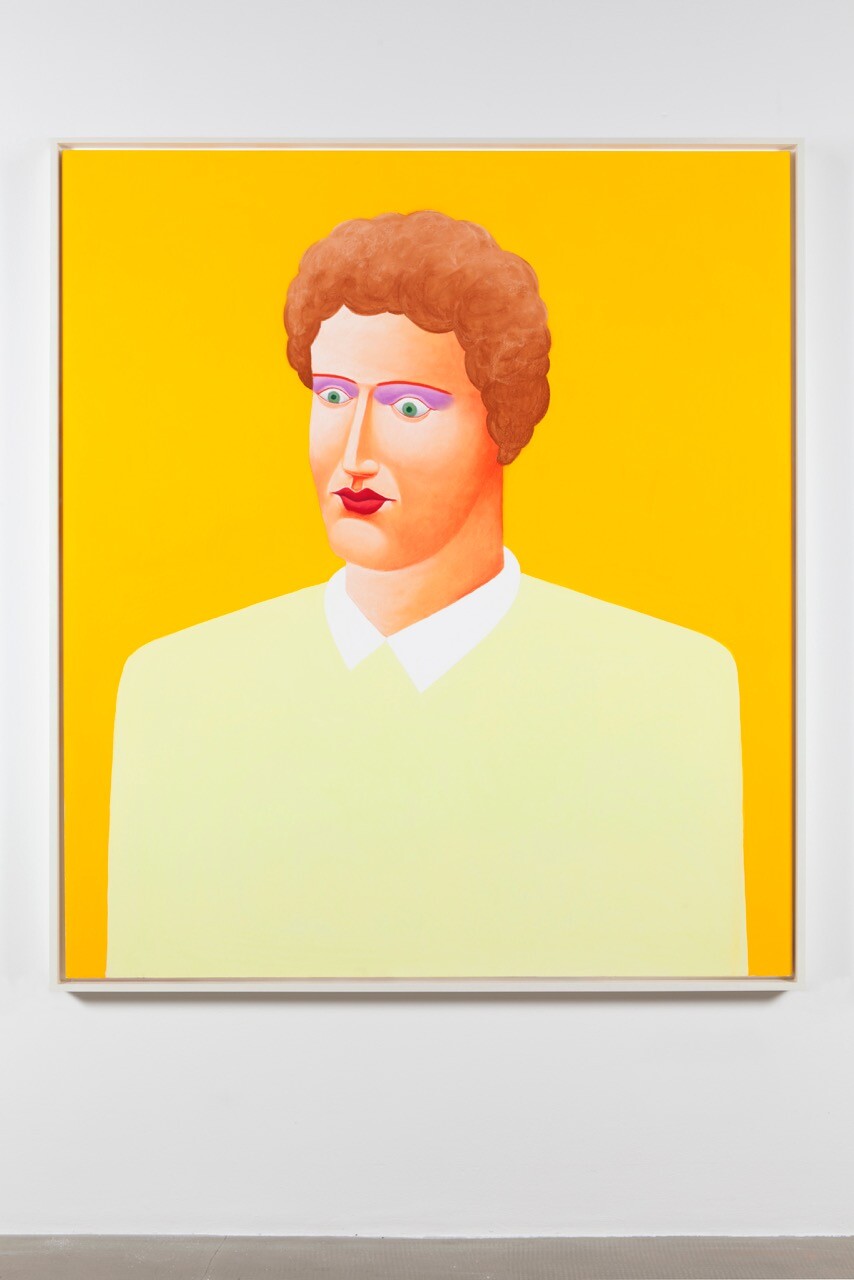Standing knee-deep in brackish water as dark as iodine, two stocky women, closely resembling each other and completely naked, have their backs turned to us. Their arms hang slack along their sides in a very relaxed pose that wraps their bones in unmoving shadow and highlights their mature, voluptuous buttocks, firm and knobby as quinces. Their hair is gathered into buns pinned at the nape of their necks, their gazes fixed on a secret, private, unknowable landscape. They are unquestionably unconcerned with reality.
Aloof and absorbed in their own leisure, the two modest bathers that Nicolas Party has drawn in charcoal on the white-plastered walls of the kaufmann repetto gallery, in a style evocative of Guercino or a certain vein of nineteenth-century painting, are the nude horizon for the first solo show by this Brussels-based Swiss artist—appropriately titled “Two Naked Women.” These portraits function as a sort of classical, nostalgic backdrop, which imbues the about fifteen works on view with a rarefied, languorous mood, warding off any impatience or haste. These works are for the most part pastel on canvas (all dated 2015, and of slow gestation), whose literal titles—Portrait, Still Life, Landscape—betray a keen interest in certain tropes and stylistic elements from the history of painting (Leon Battista Alberti’s spatial renderings; Jean-Baptiste-Siméon Chardin’s geometry; Paul Cézanne’s stylizations; the naivety of the Fauves or David Hockney’s sluggish tones), and predominantly use a palette of bright colors with a tropical sparkle: vibrant ochre, cynical red, tender pink, fiery orange, bile green, cobalt blue.
As plain as buttered rolls, looking lost against their uniform monochromatic backgrounds of different colors, the three curly-headed boys dressed in freshly laundered shirts in the “Portrait” series seem to have received a shock from the center of the Earth that rose up through their toes and left them in a state of vigilant and morbid anxiety. Their lips are pressed into bows and their owlish, purple-rimmed eyes seem to stare and see nothing, like walled-up windows. Looking at them, one wonders if they are awake or dreaming.
Bathed in the same uniform ruddy light, the thin, bare trunks in the “Trees” series—decidedly short on leaves and branches, looking shorn of their roots, with no owls or squirrels to give them a semblance of habitability—appear as they are framed by a window thrown open at night, outlined in a time of empty moments, the same that pours down on the rocky moon-fields of the “Landscape” series. In a similar way, one can consider the streamlined flowers, gummy-looking fruit, and geometric pitchers in the “Tulips” and “Still Life” series to be completely imaginary, the kitchen serving as a temporary stage for a parade of solitary and somehow comforting, familiar objects that have reminded some of the clustered compositions by Giorgio Morandi—although, compared to the “bottle painter,” Party’s unsubstantial still lifes seem to have undergone a sort of spiritual disinfestation that has drained them of any metaphysical element or sense of vertigo.
But Nicolas Party is above all an artist capable of sliding, with a certain lightness and irony, from the plane of pictorial representation into the concrete fabric of reality, while always preserving an analogous sense of time standing still. A suspended time, which rises from his solipsistic and solitary subjects emotionally detached from reality or from his odd sculptures with their unnatural colors and dreamlike forms. Difficult to identify at first, a large number of white porcelain teapot spouts (a recurring subject in many of the artist’s paintings, along with coffee pots) seem to have slipped away from their canvases and pigments in the brightly colored “Still Life” paintings and flown up to the ceiling, from which they pour an invisible brew into the air, filling the show with a delightful vivacity. And the insistent, sputtering refrain of spray-painted white and black lines (“Decorative Graffiti”) that runs with dogged conviction over the front windows of the gallery renounces any figurative, stylistic, or provocative ambition, becoming, in its alternation of somewhat weepy drippings and lace, a purely ornamental pretext for a decorative composition.
Outside, the entrance to the exhibition space is ringed by produce of every season, rolled out as if for some outlandish fruit salad—watermelon, apples, pears, oranges, lemons—made of hard stone, deceptively painted and definitely oversized. Ill-suited for juice or smoothies, these rocks, hunted down in the outskirts of Milan according to precise parameters given, then transformed into a different substance with acrylics, offer the artist a pretext to dabble in optical illusion—it must have been the form of the stones that suggested the fruit. One is reminded of the sixteenth-century Bolognese baron Ulisse Aldrovandi, who spent all of his time and energy coming up with names and resemblances for the polished pebbles that the capricious bends of the Rio delle Meraviglie transformed into curiously shaped sculptures. That is what painting seems to be for Nicolas Party: a game with infinite possibilities.









